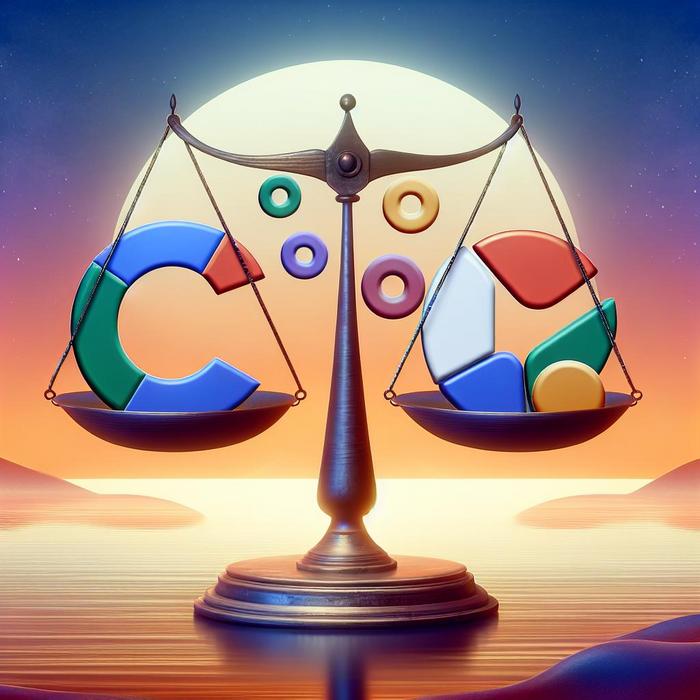Unfolding the Mysteries of LTV Campaigns
In the dynamic landscape of digital advertising, leaders are always in search of innovative tactics to outmaneuver competition, drive growth, and enhance engagement. The latest stop on this never-ending journey is the intriguing world of LTV campaigns. As a seasoned digital marketing expert, my personal experience with these campaigns, on industry-leading platforms like Google and Meta, has shown me their potential to transform businesses in remarkable ways.
Google vs Meta: The Clash of the Titans
In essence, LTV campaigns are focused on customer lifetime value, prioritizing long-term relationships over short-term sales. The battleground for these campaigns primarily lies between two behemoths of the digital advertising world: Google and Meta.
Google’s Precision: Long-term Impact Where It Matters
Google’s ad artillery is boosted by its accurate targeting capabilities. During my tenure as a PPC campaign manager, I leveraged Google’s extensive ad network to reach the right audience at the right time. Its sophisticated algorithm, coupled with a vast user base, makes it possible to scale campaigns cost-effectively.
The AI-powered Google Ads platform has the power to provide a huge boost to your decision-making arsenal, aiding in tracking and attracting high-value customers over time.
Meta’s Connectivity: Encouraging Meaningful Interactions
On the other side of the battlefield stands Meta, the parent company of Facebook, delivering unique campaign advantages through its highly integrated social media ecosystem. In my tenure managing large-scale campaigns on Meta, I observed how the platform’s social nature provides an edge. It not only lends itself to crafting engaging visual campaigns but also enhances the possibility of building long-term relationships with consumers.
Meta’s impressive suite of advertising tools is designed to lift your campaign’s performance and maximize customer lifetime value.
Comparing Campaign Strategies: The Final Verdict
While both platforms offer robust tools for executing LTV campaigns, their unique features highlight the importance of aligning your campaign strategy with your specific business needs, objectives, and target audience. To summarize, here’s how the two giants stack up:
Google:
- Superior targeting and reach
- AI-powered tracking and optimization tools
- Extensive network for cost-effective scaling
Meta:
- Highly integrated social media ecosystem
- Tools designed to facilitate long-term customer engagement
- Dynamic visual ad capabilities to enhance campaign attractiveness
In my journey as a digital marketer, I have learned that no single platform reigns supreme for every business. It’s all about identifying the right tool that aligns with your business objectives.
With strategic planning and an iterative approach, you can harness the potential of these platforms to drive your LTV campaigns to new heights.
Bringing It All Together: Your Key Takeaway
The rise of LTV campaigns underlines a critical shift in marketing strategies – from a transactional approach to a relationship-centered one. Incorporating this mentality into your campaign strategy can not only boost customer engagement but also drive sustained business growth.
The key to success lies in selecting the right platform and customizing your campaign to meet specific needs. As we pave the way for more insights into this intriguing space of LTV campaigns, we look forward to supporting your digital marketing journey with our in-depth knowledge and expertise.
Demystifying Ad Campaign Success Philosophy
The spellbinding world of digital advertising teaches that it’s not all about a single ad placement or transaction. Successful campaigns are broad strategic games, more like chess than checkers, and winning is about thinking ten moves ahead – not just capturing your opponent’s pieces.
Ad campaigns on platforms like Google, Meta, and TikTok, have shown us how the formation of long-term relationships and impactful engagements with consumers can spell success. They’ve reshaped the traditional view of customer relationship dynamics, illuminating a new, strategic landscape that revolves around a simple yet profound idea: strive to win committed customers rather than one-off sales.
Elevating the Precision of Google Ads
Imagine you are coordinating a PPC campaign. Google’s tools empower you, as a digital marketer, to launch highly targeted, cost-effective outreach to a vast audience at the right moment. Both the accuracy and broad reach of this platform are truly remarkable.
In particular, the power of Google’s AI has the ability to significantly bolster your decision-making capabilities. One of my primary learnings from managing PPC campaigns is the formidable potential of Google’s targeting and data-driven approach. This strategic asset significantly aids in tracking and consistently attracting high-value customers over time.
Capitalizing on Meta’s Connective Strengths
Switching gears, let’s delve into the world of Meta. Owning an enviable position with its integrated social media ecosystem, one cannot ignore how Meta’s strength lies in the unique way it bond businesses with their consumers.
My personal experiences throughout my digital marketing career indicate how this platform’s social essence can be leveraged for strategic advantage. It not only allows for enthralling and visually engaging campaigns but also magnifies the potential to forge lasting relationships with consumers. Meta’s vast range of social advertising tools is engineered to escalate your ad performance and optimize customer longevity.
Taming the Titans: Concocting the Perfect Strategy
There is a plethora of robust tools at your disposal on both platforms for executing successful campaigns. However, aligning the strengths of the platform with your specific objectives and target audience is key.
Both Google and Meta have their unique attributes. Hence, a proper understanding of their individual strengths can help you optimize your campaign strategy. Now, based on my experience, here is a quick breakdown:
Google:
- Vast reach and precise targeting
- Data-backed tracking and optimization
- Wide network facilitating economic scaling
Meta:
- Seamlessly interconnected social media ecosystem
- Dedicated toolsets for perpetuated customer engagement
- Superior visual ad possibilities to increase campaign appeal
My experience has taught me that no single platform can outperform others across all industries or businesses. It’s more about recognizing the apt toolkit that aligns with your specific business goals. By adopting a strategic and iterative approach, you can steer these platforms to propel your campaigns towards unprecedented triumphs.
Future-Proofing Your Strategy: Embracing Change and Innovation
The surge of interest in long-term relationships marks a significant shift from a transaction-centered perspective. Cultivating relationships is not just about improving customer retention or deepening brand loyalty. It is also about attaining sustainable business growth.
Successfully building your strategy depends on finding the right platform, personalizing your campaigns to specific needs, and continuously innovating to stay ahead of the curve.
As we continue to explore the enigmatic realm of digital ad campaigns, and how to succeed in it, I am eager to share the wisdom and insights harvested from years of professional practice. Stay tuned for more breakthroughs from the forefront of digital marketing.









